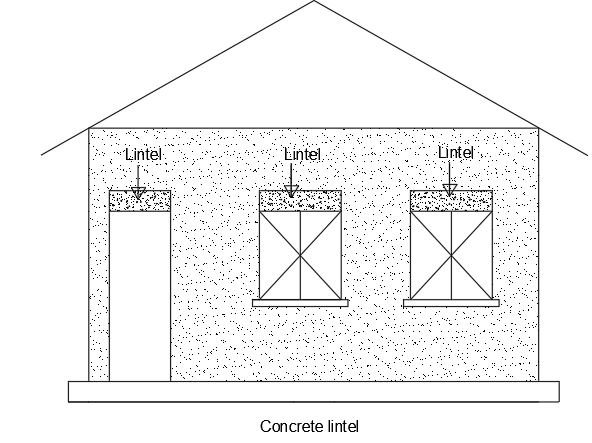POINTING.
Pointing in building construction refers to the process of filling the gaps or joints between bricks, stones, or other masonry materials with mortar or other suitable materials. So Its purpose is to provide a strong and stable structure, prevent water penetration, and enhance the appearance of the building.
It is usually required when the existing mortar joints have deteriorated due to weathering or other factors, or when the walls have been repaired or renovated. so the process involves removing the old mortar to a certain depth, and then applying a new layer of mortar to fill the gaps.
MATERIALS FOR POINTING/JOINTING.
Cement: Cement is a common material used for pointing. It is usually mixed with sand and water to form a mortar that is used to fill in the gaps between bricks or stones.
Lime: Lime is also used for pointing, either on its own or mixed with cement. Lime mortar is more flexible than cement mortar, which can help prevent cracking over time.
Sand: Sand is usually added to cement or lime mortar to provide bulk and improve the workability of the mix.
Grout: Grout is a type of mortar that is usually used for pointing between tiles, but it can also be used for masonry. It is typically made from a mix of cement, sand, and water.
Epoxy: Epoxy is a type of synthetic resin that can be used for pointing. It is more durable and resistant to moisture than traditional mortar, but it is also more expensive.
Polymer-based pointing compounds: These are synthetic materials that can be used for pointing. They are usually pre-mixed and come in a range of colors to match the masonry being pointed.
Natural stone: In some cases, natural stones are used for pointing. This is usually done for aesthetic reasons, and the stones are typically cut to fit the gaps between the masonry being pointed.
MORTAR POINTING.
These vary in composition and color according to requirements but as a general rule, the ultimate strength of the pointing mortar for wall, should not exceed the strength of the bricks with which the wall has been built. Hard dense bricks can cause serious deuteriation of some types of soft facing bricks, 1:3 ratio is always quite satisfactory.
if you want colored black, green, blue, brown or red, you can get them by adding patent additives to the mortar.
TYPES.
There are several types of pointing techniques used in building construction. Each technique has its own unique characteristics and is chosen based on the type of building, the type of masonry, and the desired aesthetic effect. Here are some of the most common types include.
Flush: In this technique, the mortar is applied flush with the face of the masonry. This creates a smooth and uniform surface.
Recessed: In this technique, the mortar is set back from the face of the masonry, leaving a small groove or “reveal” between the mortar and the masonry. This creates a more textured and rustic appearance.
Tuck: This is a technique that involves applying two different colors of mortar to the joints. A base layer of mortar is applied first, and then a thin layer of contrasting mortar is applied on top, creating a decorative effect.
Weathered: This technique is commonly used in older buildings with sloping walls. The mortar is shaped to create a stepped effect, allowing rainwater to run off the surface and preventing it from penetrating the masonry.
Ribbon: In this technique, the mortar is applied in a ribbon-like pattern, creating a decorative effect. This technique is commonly used in Victorian-era buildings.
JOINTING
The main difference between jointing and pointing is that, jointing is filling the gaps between blocks/bricks with mortar to make an even smooth joint, while pointing is the act of smoothening of the joint using different techniques and tools to obtain the shape required, these shapes determine the type of both jointing and pointing.
TYPES OF JOINTING
A RECESSED JOINT

A FLUSH JOINT

A WEATHER/STRUCK JOINT

A ROUNDED JOINT

A STRUCK JOINT





